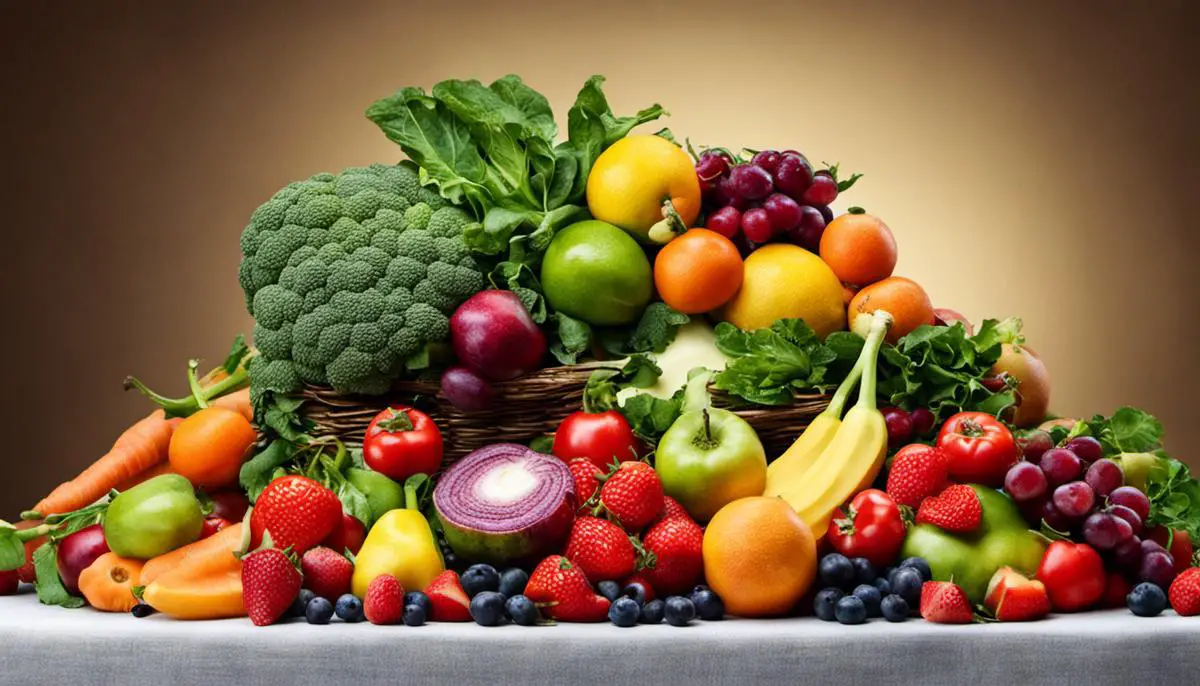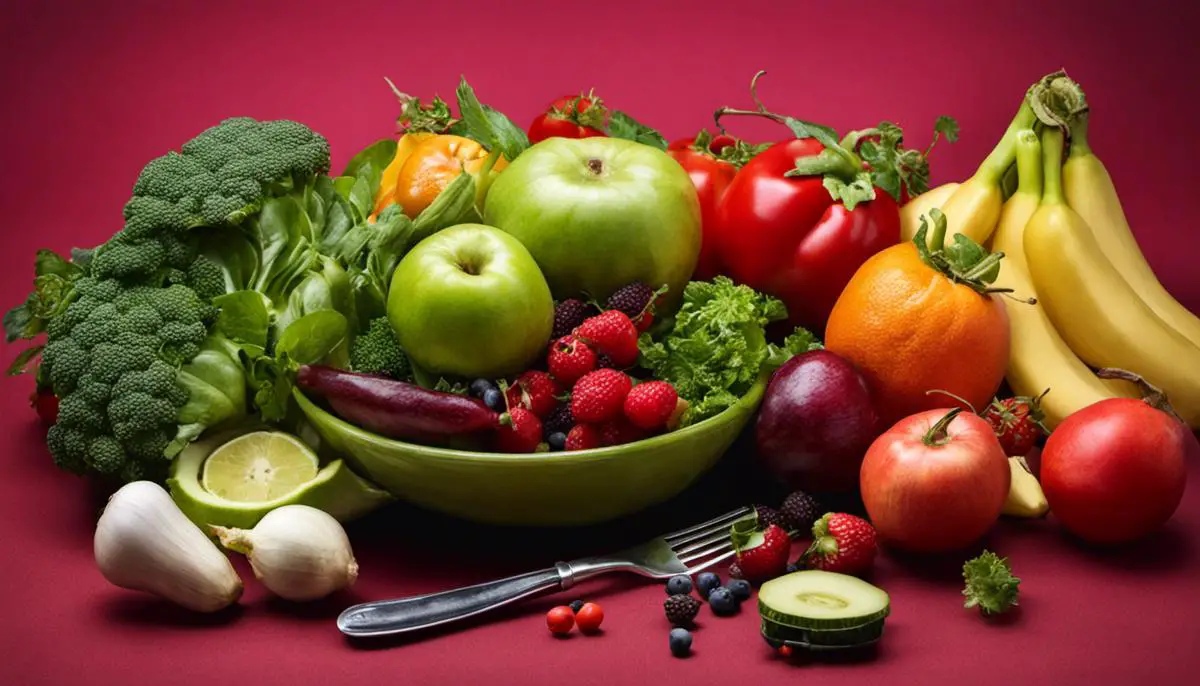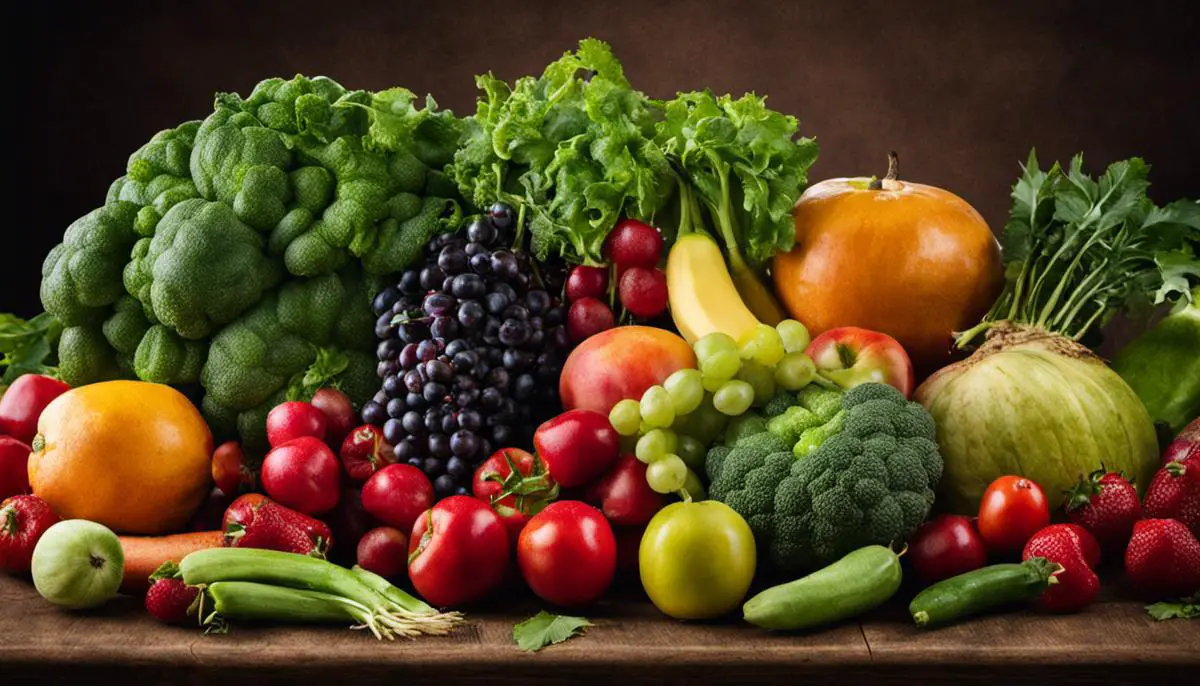
The world of fruits and vegetables is as diverse as it is delicious. These food items, integral to our daily diet, are more complex than often perceived when it comes to their classification. Navigating through the taxonomical journey of how the scientific community categorizes these plant species may bring surprising revelations about the ‘real’ identity of some of our favorite food items. Diving into this complex world of systematized species, we explore the botanical criteria and culinary definitions that differentiate fruits from vegetables. Our understanding of this vast sphere further expands as we recognize the influence of cultural and regional variations in this classification.
Taxonomical Classification of Fruits and Vegetables
The intricacies of botanical science reflect the world’s astonishing diversity. Among these is an aspect that has served as a fodder for relentless debates and countless dining table conversations – the differentiation between fruits and vegetables. It is a topic that intrigues hobby gardeners, nutritionists, scientific scholars, and even the curious minds within our kitchens.
At the heart of the argument, it relates to the stark contrast between culinary and scientific definitions. This article seeks to illuminate this fine line by delving into the idiosyncratic wonders of scientific classification.
The fundamental distinction resides within the realm of plant reproduction. Taking this into account, the term fruit is purely a botanical term, referring to a mature ovary of a seed-bearing plant, which can vary significantly in size, color, taste, and texture. It may be pulpy as in a tomato, hard and rigid as in a nut, dry as in wheat, or juicy as in an apple. Indeed, all of these are fruits; their shared characteristic being the manner in which they house and protect the developing seeds.
Meanwhile, the term vegetable does not have a defined botanical meaning. Generally, it refers to the other parts of the plant that are consumed by human beings – roots, stems, leaves, and sometimes the flower buds. These include, but are not limited to, potatoes that grow underground as tubers, lettuce that is the leaf of a plant, celery that is a stem, and broccoli that is flower buds. Although vegetables, in a culinary sense, seldom offer the sugary sweetness of fruits, they are rich in carbohydrates, vitamins, and fiber, confirming their well-earned reputation in human nutrition.
A fascinating factor that further complicates our understanding is the sheer confluence that happens in botanical and culinary contexts. Evidently, what is botanically a fruit can easily be a vegetable in the culinary world, and vice versa. This has been shaped by various factors such as taste, preparation method, cultural influence, and dietary considerations. Take, for instance, the classic example of a tomato – widely accepted as a vegetable in culinary circles, yet botanically, it meets the criteria of a fruit.
In essence, the scientific classification of fruits and vegetables discloses the complex wonders of botany and the intricacies of human culinary traditions. However, one could argue that whether we label a tomato a fruit or a vegetable is of little importance compared to the nutritional benefit it brings to our plates. Knowledge of the botanical classification and its differentiation can fuel our curiosity and deepen our appreciation of nature’s abundant produce, pointing us towards an enriching journey of insight and discovery that extends well beyond the boundary of our kitchen gardens. Because in the end, illuminated with scientific knowledge, we end up not only cherishing our meals, but also the taxonomy and botany behind them.

Culinary Perspective on Fruits and Vegetables
Diving deeper into the culinary realm, it is clear that chefs and those steeply invested in gastronomy distinguish fruits from vegetables utilizing criteria that extend beyond traditional scientific classifications. A discerning eye on flavor, texture, and cooking methods often take precedence over botanical definitions in this artful domain.
Fruits in the culinary context are typically perceived as sweet or tangy and consumed as desserts, snacks, or incorporated into sweet dishes. Strawberries, apples, and grapes commonly fit this profile, but the same concept applies to less conventionally sweet fruits such as avocados, tomatoes, and cucumbers. These find usage in desserts like avocado ice cream, tomato jam, and cucumber sorbets.
Conversely, vegetables are usually associated with savory or less sweet tastes. They form the primary building block of main courses, stir-fries, soups, and salads. This includes traditional vegetables like brussel sprouts, potatoes, and carrots, and botanically classified fruits such as bell peppers, zucchinis, and eggplants, showing a nuanced application of standard definitions in the culinary sphere.
Fruits are also usually consumed raw or minimally processed, often serving as a refreshing complement to heavier dishes. Their high sugar content when ripe and varying levels of acidity often render them ideal for cooking at low temperatures or utilizing in fresh preparations. In the presence of heat, their natural sugars frequently undergo caramelization, offering an additional depth of flavor.
On the other hand, vegetables are well suited to stand up to high cooking temperatures, with techniques such as roasting, steaming, or sautéing being employed. These methods help break down and transform the complex carbohydrates within them into simpler sugars, balancing out their inherent bitterness and enhancing their flavor profile.
The glaring overlap in these classifications, exemplified by edge-cases such as rhubarb or pumpkin, adds an exciting layer to culinary evolution. These challenges enable chefs to demonstrate their creative prowess, eroding boundaries and embracing multisensory culinary experiences.
It is, therefore, evident that the distinction between fruits and vegetables in gastronomy is a complex symbiosis of scientific and sensory knowledge. This knowledge has formed the foundation for iconic dishes and innovative recipes around the world. Above all, the ability to blend fact with flavor is not just about names and categories; it is a testament to the expansive, vibrant world of cuisine that acknowledges both the science and artistry of food.

Implications on Nutrition and Dietary Patterns
In relation to our comprehension of nutrition, the classification of fruits and vegetables plays a critical role. By grasping the inherent nutritional profiles of fruits and vegetables, within both botanical and culinary definitions, we can begin to piece together the potential health impacts of our dietary choices. This understanding can not only influence our perception of food, but can also guide our dietary patterns and choices towards a more nutritious, balanced diet.
As botanical fruits are usually seed-bearing, they frequently contain a potent source of dietary fiber. This indigestible carbohydrate promotes a healthy digestive system, and also has associations with a decreased risk of heart disease and certain types of cancer. Predominantly identified as sweet or tangy, fruits can also be a healthy substitute for sugar-laden desserts and snacks, mitigating risks associated with excessive sugar intake such as obesity and type 2 diabetes.
Additionally, distinctive nutrients are attached to specific types and colors of fruits. For instance, citrus fruits are renowned for their high vitamin C content; berries provide rich amounts of antioxidants; bananas are a good source of potassium; while apples are credited with extensive fiber content. Understanding these unique associations can aid in nutritional planning and foster positive health impacts.
Different botanical classifications of fruits also contribute to their diverse nutrient profiles. One botanical fruit might be a good source of certain vitamins, while another may be high in fiber or antioxidants. This variability underpins the importance of a varied diet to ensure broad-spectrum nutrient intake.
On the other hand, vegetables, as defined culinarily—comprising roots, stems, leaves, and flower buds—also present an array of nutrients key to maintaining good health. Dark leafy vegetables, for instance, are famously high in iron and calcium. Root vegetables provide significant amounts of complex carbohydrates, which are necessary for sustained energy release. Legumes, while technically a botanical fruit, are often classified as vegetables in a culinary context and are valuable sources of protein, iron, and dietary fiber.
Crucially, the culinary context plays a significant role in the nutritional properties of both fruits and vegetables. For instance, certain cooking methods can either enhance or reduce their nutritional content. The high heat tolerance of vegetables enables the utilization of various cooking techniques, potentially enhancing their palatability and nutrient accessibility. However, indiscriminate application of high heat can risk destroying certain heat-sensitive nutrients, reinforcing the relevance of culinary understanding in nutrition.
Given the overlaps between botanical and culinary definitions, disentangling the distinctions between fruits and vegetables might present difficulties. However, the rewards from such an academic endeavor are manifold: enhancing our appreciation of the produce of nature; enriching our gastronomic experiences; and, crucially, enabling us to better understand what constitutes convenient, balanced, and nutritious dietary patterns.
By reaching back to botanical classifications, we can acknowledge the fascinating complexities and potential confluences across these categories. Simultaneously engaging with the culinary world’s approach enables us to navigate the usage and application of these plant foods in varied global culinary practices.
In a sense, the rich tapestry that underpins the academic world of taxonomy and botany proves essential to inspiring the culinary world. This interplay of science and gastronomy enriches the culinary landscape and potentially bolsters our health, longevity, and appreciation of the natural world. Therefore, the more we comprehend the underpinnings of fruit and vegetable classifications, the more empowered we become in making informed and healthful dietary choices.

As we conclude this journey into the world of fruits and vegetables, it’s worth noting that their classification has considerable implications on our perception of nutrition and dietary patterns. The fascinating dichotomy between the botanical and culinary definitions can often influence dietary guidelines and our understanding of nutritional values. By comprehending these aspects, we underscore the importance of diverse intake. Uncovering these complexities helps us realize that our dinner plate is not just a plethora of flavors but also a rich canvas illustrating the intricate and diverse world of plant species.



